What You Need To Know About Frankincense – A Complete Review of the Health Benefits and 7 Therapeutic Uses of Olibanum
The Health Benefits of Frankincense
Overview
Frankincense, also known as olibanum, is a resin obtained from trees of the genus Boswellia, particularly Boswellia sacra, Boswellia carterii, and Boswellia serrata. Used for centuries in traditional medicine, religious ceremonies, and cosmetics, frankincense has garnered modern scientific interest for its potential health benefits. This article explores the various health benefits of olibanum, backed by contemporary research.
A Brief History of Frankincense
Frankincense, is an aromatic resin derived from trees of the Boswellia genus. With a history stretching back thousands of years, frankincense has been highly prized across various cultures for its religious, medicinal, and economic significance. This article explores the historical journey of olibanum, from its ancient origins to its modern-day uses.
Ancient Origins
The use of frankincense dates back to ancient times, with some of the earliest records found in Egypt, Mesopotamia, and the Arabian Peninsula. It was highly valued for its fragrance, which made it a key component in religious rituals, incense, and perfumes.
- Egypt: The ancient Egyptians used olibanum in their religious ceremonies and embalming processes. It was considered sacred and was often offered to the gods. Frankincense was also a key ingredient in the famous Egyptian incense blend known as “kyphi”.
- Mesopotamia: In Mesopotamian cultures, frankincense was used in temple rituals and as a part of their medicinal practices. The Sumerians, for instance, recorded its use in their cuneiform tablets, indicating its significance in early civilization.
- Arabian Peninsula: The Arabian Peninsula, particularly the region known as the “Frankincense Trail,” was the primary source of frankincense in antiquity. The ancient kingdom of Saba (modern-day Yemen) and the region of Dhofar (in present-day Oman) were major producers and exporters of olibanum.
Trade and Commerce
The demand for olibanum spurred extensive trade routes connecting the Arabian Peninsula with the Mediterranean, India, and beyond. These trade routes, often referred to as the Incense Routes, played a crucial role in the economic and cultural exchanges between civilizations.
- Incense Routes: The Incense Routes were a network of ancient trade paths that facilitated the transport of frankincense and other precious commodities from southern Arabia to the Mediterranean world. Caravans would travel through the Arabian Desert, carrying olibanum to cities like Petra, Palmyra, and Gaza.
- Roman Empire: The Roman Empire was one of the largest consumers of frankincense. The Romans used it extensively in religious ceremonies, public events, and personal care products. Pliny the Elder, a Roman author, documented the trade and use of olibanum in his encyclopedic work, Natural History.
- India and China: Frankincense also reached as far as India and China through maritime trade routes. In India, it was used in Ayurvedic medicine, while in China, it found applications in traditional Chinese medicine and religious practices.
Religious Significance
Frankincense has deep-rooted significance in various religious traditions. Its use in rituals and ceremonies has been documented across different cultures and faiths.
- Judaism: In the Hebrew Bible, frankincense is mentioned numerous times as an essential component of the sacred incense used in the Tabernacle and later in the Temple in Jerusalem.
- Christianity: Frankincense holds a special place in Christian tradition, notably in the story of the Nativity, where it was one of the gifts presented to the infant Jesus by the Magi. It continues to be used in Christian liturgies, especially in the Roman Catholic, Eastern Orthodox, and Anglican churches.
- Islam: In Islamic culture, frankincense is used in various religious practices, including perfuming the Kaaba in Mecca. It is also valued for its purifying properties and its ability to create a serene and holy atmosphere.
Modern Uses
Today, olibanum continues to be valued for its aromatic and therapeutic properties. It is widely used in aromatherapy, traditional medicine, and skincare products.
- Aromatherapy: Frankincense essential oil is popular in aromatherapy for its calming and grounding effects. It is believed to reduce stress, enhance meditation, and promote a sense of well-being.
- Traditional Medicine: In addition to its historical uses, modern research has begun to validate the therapeutic benefits of frankincense, including its anti-inflammatory, antimicrobial, and anticancer properties.
- Skincare: Frankincense is a common ingredient in skincare products due to its purported anti-aging and skin-rejuvenating properties. It is used to improve skin tone, reduce wrinkles, and promote healing.
Frankincense has a rich and varied history, intertwining with the cultural, religious, and economic fabrics of ancient civilizations. From its sacred uses in religious rituals to its valued role in ancient trade and its modern therapeutic applications, olibanum remains a symbol of continuity and tradition. Its enduring legacy is a testament to its significance and versatility throughout human history.
Incredible Health Benefits
- Anti-Inflammatory Properties
One of the most studied aspects of olibanum is its anti-inflammatory properties. The resin contains boswellic acids, which have been shown to inhibit the production of pro-inflammatory enzymes. Research suggests that frankincense can be effective in reducing inflammation associated with conditions such as arthritis, asthma, and inflammatory bowel disease (IBD).
- Arthritis: A study published in the journal Arthritis Research & Therapy found that olibanum extract could significantly reduce the symptoms of osteoarthritis, including pain and stiffness, by inhibiting inflammatory pathways.
- Asthma: Another study demonstrated that boswellic acids could improve lung function and reduce asthma symptoms by decreasing inflammation in the airways.
- IBD: Frankincense has been used in traditional medicine to treat digestive disorders. Modern studies have shown that it can help manage symptoms of IBD by reducing inflammation in the gut.
- Antimicrobial Effects
Frankincense exhibits antimicrobial properties that can help fight various pathogens. Its essential oil contains compounds such as alpha-pinene and limonene, which have been found to possess antibacterial, antifungal, and antiviral activities.
- Bacterial Infections: Research has shown that frankincense oil can inhibit the growth of harmful bacteria, including Staphylococcus aureus and Escherichia coli.
- Fungal Infections: Studies indicate that frankincense oil is effective against certain fungi, making it a potential treatment for fungal infections such as candidiasis.
- Viral Infections: Preliminary studies suggest that olibanum may have antiviral properties, though more research is needed to confirm its efficacy against specific viruses.
- Cancer Prevention and Treatment
Emerging evidence suggests that olibanum may have potential anticancer properties. Some studies have found that boswellic acids can induce apoptosis (programmed cell death) in cancer cells and inhibit the proliferation of tumors.
- Breast Cancer: A study published in BMC Complementary and Alternative Medicine found that frankincense extract could suppress the growth of breast cancer cells by triggering apoptosis and inhibiting cell proliferation.
- Colon Cancer: Another study showed that boswellic acids could inhibit the growth of colon cancer cells and reduce tumor size in animal models.
- Skin Health
Olibanum has been used in skincare for its rejuvenating and healing properties. Its anti-inflammatory and antimicrobial effects make it beneficial for various skin conditions.
- Acne: Frankincense oil can help reduce acne by decreasing inflammation and preventing bacterial infections.
- Wound Healing: The resin promotes wound healing and can help reduce the appearance of scars by stimulating cell regeneration.
- Anti-Aging: Frankincense is often used in anti-aging skincare products due to its ability to improve skin elasticity and reduce the appearance of wrinkles.
Olibanum has a long history of use in aromatherapy and traditional medicine for enhancing mental clarity, reducing stress, and promoting relaxation.
- Anxiety and Depression: Aromatherapy with frankincense oil has been shown to reduce anxiety and improve mood. A study in the Journal of Traditional and Complementary Medicine found that inhaling frankincense oil could lower levels of anxiety and depression in patients undergoing medical procedures.
- Cognitive Function: Some research suggests that olibanum may improve cognitive function and memory, potentially benefiting individuals with neurodegenerative diseases such as Alzheimer’s.
- Immune System Support
Olibanum may help strengthen the immune system by enhancing the body’s ability to fend off infections and diseases.
- Immune Modulation: Studies have shown that boswellic acids can modulate the immune system, improving its ability to respond to threats while reducing harmful inflammation.
- Respiratory Health: Olibanum has been used traditionally to treat respiratory conditions. Modern research indicates that it can help clear mucus from the lungs and improve breathing in conditions like bronchitis and sinusitis.
Therapeutic Compounds of Frankincense
Frankincense, derived from the resin of Boswellia trees, contains a variety of bioactive compounds responsible for its therapeutic properties. Among these compounds, alpha-pinene, alpha-thujene, and limonene stand out for their significant health benefits. This article delves into the therapeutic properties of these key constituents of olibanum.
Alpha-Pinene
Alpha-pinene is a monoterpene known for its distinctive pine-like aroma. It is one of the most abundant terpenes found in nature and is a major component of frankincense essential oil.
- Anti-inflammatory Properties
- Mechanism: Alpha-pinene has been shown to inhibit the production of pro-inflammatory cytokines and enzymes, reducing inflammation in the body. A study published in the journal Phytomedicine demonstrated that alpha-pinene can significantly reduce inflammation in animal models, making it a potential treatment for inflammatory conditions such as arthritis.
- Antimicrobial Effects
- Mechanism: Alpha-pinene exhibits broad-spectrum antimicrobial activity, effectively inhibiting the growth of various bacteria, fungi, and viruses. According to a study in the Journal of Natural Products, alpha-pinene showed potent antibacterial activity against Staphylococcus aureus and Escherichia coli, two common pathogenic bacteria.
- Respiratory Benefits
- Mechanism: Alpha-pinene has bronchodilator effects, which can help improve airflow to the lungs and alleviate respiratory conditions. Research published in the Journal of Ethnopharmacology found that alpha-pinene could improve respiratory function and reduce symptoms in animal models of asthma and chronic obstructive pulmonary disease (COPD).
- Cognitive Function
- Mechanism: Alpha-pinene is believed to enhance cognitive function by inhibiting the breakdown of acetylcholine, a neurotransmitter essential for memory and learning. Studies have shown that alpha-pinene can improve memory and cognitive performance in animal models, suggesting potential benefits for neurodegenerative diseases like Alzheimer’s.
Alpha-Thujene
Alpha-thujene is another monoterpene present in frankincense, known for its distinctive aroma and therapeutic properties.
- Antioxidant Activity
- Mechanism: Alpha-thujene exhibits strong antioxidant properties, which can protect cells from oxidative stress and free radical damage. A study published in the Journal of Agricultural and Food Chemistry found that alpha-thujene effectively scavenges free radicals, highlighting its potential in preventing oxidative stress-related diseases.
- Antimicrobial Properties
- Mechanism: Alpha-thujene has been shown to possess antimicrobial activity against a range of pathogens, including bacteria and fungi. Research in the Journal of Essential Oil Research demonstrated that alpha-thujene could inhibit the growth of common bacterial strains, such as Escherichia coli and Candida albicans, a pathogenic yeast.
- Anti-inflammatory Effects
- Mechanism: Similar to alpha-pinene, alpha-thujene can reduce inflammation by inhibiting the production of inflammatory mediators. Studies indicate that alpha-thujene can alleviate inflammatory symptoms in animal models, suggesting its potential use in treating inflammatory disorders.
Limonene
Limonene is a monoterpene with a citrus-like aroma, commonly found in the rinds of citrus fruits and frankincense resin. It is well-regarded for its wide range of therapeutic effects.
- Anti-cancer Properties
- Mechanism: Limonene has been shown to induce apoptosis (programmed cell death) in cancer cells and inhibit tumor growth. A study in the Journal of Carcinogenesis highlighted limonene’s ability to suppress the growth of breast cancer cells, indicating its potential as an anti-cancer agent.
- Anti-inflammatory Benefits
- Mechanism: Limonene can modulate inflammatory pathways, reducing the production of inflammatory cytokines and enzymes. Research published in Biochimica et Biophysica Acta found that limonene could effectively reduce inflammation in animal models of colitis, suggesting its potential in treating inflammatory bowel disease.
- Anxiety and Stress Reduction
- Mechanism: Limonene has anxiolytic (anxiety-reducing) properties, which can help alleviate stress and anxiety. A study in the journal Progress in Neuro-Psychopharmacology & Biological Psychiatry demonstrated that limonene inhalation could reduce anxiety-like behavior in animal models, supporting its use in aromatherapy for stress relief.
- Digestive Health
- Mechanism: Limonene can support digestive health by promoting gastric motility and reducing acid reflux. Studies have shown that limonene can relieve symptoms of gastroesophageal reflux disease (GERD) and improve overall digestive function.
Alpha-pinene, alpha-thujene, and limonene are key therapeutic compounds found in frankincense, each contributing to its wide array of health benefits. From their anti-inflammatory and antimicrobial properties to their potential in enhancing cognitive function and reducing cancer risk, these compounds highlight the multifaceted therapeutic potential of olibanum. Ongoing research continues to uncover the mechanisms and applications of these natural compounds, further validating their traditional uses.
Therapeutic Uses of Frankincense
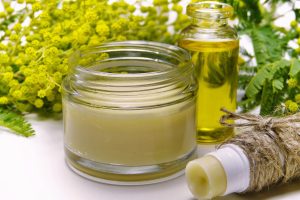
1. Serves as a Powerful Addition to Cancer Fighting Protocols
Olibanum has gained attention for its potential role in cancer treatment due to its anti-inflammatory and apoptotic properties.
- Anti-Cancer Properties: Studies have shown that compounds in frankincense, particularly boswellic acids, can induce apoptosis (programmed cell death) in cancer cells and inhibit tumor growth. A study in the journal BMC Complementary and Alternative Medicine demonstrated that frankincense extract could inhibit the proliferation of human pancreatic cancer cells. Another study in Cancer Research highlighted its effectiveness in reducing the viability of bladder cancer cells.
2. May Relieve Joint Inflammation and Pain
Frankincense is known for its potent anti-inflammatory properties, making it beneficial for managing conditions like arthritis.
- Mechanism: Boswellic acids inhibit the production of pro-inflammatory enzymes and cytokines, reducing inflammation and pain. Clinical trials have shown that frankincense extract can significantly reduce symptoms of osteoarthritis and rheumatoid arthritis. A study published in Arthritis Research & Therapy found that patients with osteoarthritis experienced reduced pain and improved joint function after taking frankincense extract for eight weeks.
3. Boosts the Immune System
Olibanum is believed to enhance the immune system’s response, helping the body fight infections and diseases.
- Immune Modulation: Compounds in frankincense can modulate the immune system by increasing the activity of white blood cells and enhancing the body’s defense mechanisms. A study in Planta Medica indicated that olibanum could stimulate the proliferation of lymphocytes and increase the production of antibodies, thereby boosting immune function.
4. Promotes Relaxation During Meditation and Prayer
Frankincense has been used for centuries in religious and spiritual practices to enhance meditation and promote a sense of peace and relaxation.
- Aromatherapy: The soothing aroma of frankincense essential oil can reduce stress and anxiety, helping individuals achieve a meditative state. Research published in the Journal of Alternative and Complementary Medicine found that olibanum aromatherapy reduced anxiety and improved mood in participants. Another study highlighted its potential to lower cortisol levels, a marker of stress.
5. Relieves Cold and Flu Symptoms
Frankincense has expectorant and anti-inflammatory properties that can help alleviate symptoms of respiratory infections such as colds and flu.
- Respiratory Health: Inhalation of frankincense essential oil can reduce mucus production and ease breathing. A study in the Journal of Ethnopharmacology showed that olibanum could reduce symptoms of bronchitis and sinusitis by decreasing inflammation and mucus secretion.
6. Reduces the Appearance of Stretch Marks and Wrinkles
Frankincense is commonly used in skincare for its ability to promote skin regeneration and improve the appearance of scars, stretch marks, and wrinkles.
- Skin Regeneration: The compounds in frankincense stimulate cell growth and repair, improving skin elasticity and texture. A study published in the Journal of Traditional and Complementary Medicine demonstrated that topical application of frankincense essential oil improved skin elasticity and reduced the appearance of wrinkles and stretch marks.
7. Helps Those with Brain Injury and Alzheimer’s
Frankincense shows promise in supporting brain health and cognitive function, potentially benefiting individuals with brain injuries or neurodegenerative conditions like Alzheimer’s disease.
- Neuroprotective Effects: Olibanum contains compounds that have anti-inflammatory and antioxidant properties, which can protect brain cells from damage and improve cognitive function. A study in Phytotherapy Research found that frankincense extract improved cognitive function and reduced amyloid plaque formation in animal models of Alzheimer’s disease. Another study suggested its potential in enhancing memory and learning by protecting neurons from oxidative stress.
Frankincense offers a wide range of therapeutic benefits, from supporting cancer treatment and relieving joint pain to boosting the immune system and enhancing cognitive function. Its historical use and modern scientific validation make it a valuable natural remedy for various health conditions.
Risks and Safety of Frankincense
Frankincense, derived from the resin of Boswellia trees, is renowned for its various health benefits and uses in traditional medicine, aromatherapy, and skincare. While generally considered safe, frankincense can pose certain risks and side effects, particularly when used improperly. This article explores the potential risks and safety considerations associated with the use of olibanum, supported by scientific references.
Potential Risks and Side Effects
- Allergic Reactions
- Skin Irritation: Frankincense essential oil can cause skin irritation or allergic reactions in some individuals, especially when used undiluted. Symptoms may include redness, itching, and swelling. A patch test is recommended before applying it to larger areas of the skin.
- Contact Dermatitis: Prolonged use of frankincense on the skin can lead to contact dermatitis, characterized by a rash or inflammation.
- Gastrointestinal Issues
- Digestive Disturbances: Ingesting olibanum or its supplements can cause gastrointestinal issues such as stomach pain, nausea, and diarrhea in some individuals. These symptoms are more likely to occur with high doses.
- Drug Interactions
- Anticoagulants: Olibanum may interact with blood-thinning medications such as warfarin, increasing the risk of bleeding. Caution is advised when using frankincense alongside these medications.
- Anti-inflammatory Drugs: Since frankincense has anti-inflammatory properties, it might enhance the effects of non-steroidal anti-inflammatory drugs (NSAIDs), potentially leading to adverse effects.
- Pregnancy and Breastfeeding
- Safety Concerns: The safety of frankincense during pregnancy and breastfeeding is not well-established. It is advisable for pregnant and breastfeeding women to avoid using olibanum or to consult with a healthcare provider before use.
- Respiratory Issues
- Asthma: Although frankincense is sometimes used to treat asthma, inhaling its smoke or vapor can potentially trigger asthma symptoms or respiratory issues in sensitive individuals. Proper ventilation and dilution are important when using frankincense in aromatherapy.
Safety Considerations
- Proper Dilution
- Essential Oils: Frankincense essential oil should always be diluted with a carrier oil (such as coconut oil or jojoba oil) before topical application to minimize the risk of skin irritation. A typical dilution ratio is 2-3 drops of essential oil per teaspoon of carrier oil.
- Dosage and Administration
- Oral Supplements: When taking frankincense orally, it is important to adhere to recommended dosages. High doses can lead to adverse effects. Always follow the dosage instructions provided by the manufacturer or a healthcare professional.
- Inhalation: When using olibanum in a diffuser, ensure proper ventilation and avoid prolonged exposure to concentrated vapors. Using a few drops in a well-ventilated area is generally considered safe.
- Quality and Purity
- Product Quality: Use high-quality, pure frankincense products from reputable sources. Adulterated or contaminated products can increase the risk of adverse reactions.
- Storage: Store frankincense resin and essential oil in a cool, dark place to maintain their potency and prevent degradation.
- Consultation with Healthcare Providers
- Medical Advice: Before using frankincense for medicinal purposes, especially if you have pre-existing health conditions or are taking other medications, consult with a healthcare provider to ensure its safety and avoid potential interactions.
Research and Regulatory Status
While many studies support the therapeutic benefits of olibanum, more research is needed to fully understand its safety profile. The U.S. Food and Drug Administration (FDA) does not regulate essential oils, including frankincense, as strictly as pharmaceuticals. Therefore, it is crucial to rely on scientific research and professional guidance when using olibanum for health purposes.
Olibanum is a valuable natural remedy with a range of health benefits, but it is not without risks. Potential side effects include skin irritation, gastrointestinal issues, and interactions with certain medications. By adhering to safety guidelines, such as proper dilution, appropriate dosages, and consulting with healthcare providers, individuals can minimize the risks and safely enjoy the benefits of frankincense.
After Thoughts
Frankincense offers a wide range of health benefits, from reducing inflammation and fighting infections to potentially preventing cancer and improving mental health. While more research is needed to fully understand its mechanisms and efficacy, the current evidence supports the traditional uses of olibanum in medicine. As with any natural remedy, it is essential to consult with a healthcare professional before using olibanum, especially for therapeutic purposes.
Start incorporating Frankincense into your diet today to help start enjoying its health benefits and experience a revitalized Optimal Health.
For natural and healing remedies, products, and supplements to help you live your most optimal healthy life, visit our store here!
Remember: Own Your Health!
If you enjoyed the information presented in this article, Please Share It. Help us reach more people and keep this website going! Thank you!
Note: The information provided in this article is for educational purposes only and should not be considered medical advice. Please consult with a healthcare professional or registered dietitian before making any significant changes to your diet or lifestyle.
Frankincense Frequently Asked Questions (FAQ)
Frankincense, also known as olibanum, is a resin obtained from the Boswellia tree. It has been used for centuries in religious ceremonies, traditional medicine, and aromatherapy. Here are some frequently asked questions about olibanum:
- What is frankincense?
Frankincense is a resin derived from the Boswellia tree, particularly Boswellia sacra, Boswellia carterii, Boswellia frereana, and Boswellia serrata. The resin is harvested by making incisions in the tree’s bark and allowing the sap to harden.
- What are the primary uses of frankincense?
Olibanum is used for:
- Aromatherapy
- Traditional medicine
- Religious ceremonies
- Skincare and cosmetic products
- Perfumery
- What are the health benefits of frankincense?
Frankincense offers various health benefits, including:
- Anti-inflammatory properties
- Antimicrobial effects
- Pain relief
- Immune system support
- Respiratory health improvement
- Skin health benefits, including reducing the appearance of scars and wrinkles
- How is frankincense used in aromatherapy?
In aromatherapy, frankincense essential oil is often diffused or inhaled to promote relaxation, reduce stress, and enhance mood. It can also be blended with carrier oils for massage.
- Can frankincense be applied directly to the skin?
Frankincense essential oil should be diluted with a carrier oil (such as jojoba, coconut, or almond oil) before applying it to the skin to avoid irritation. It is recommended to perform a patch test to check for any allergic reactions.
- Is frankincense safe to ingest?
While olibanum resin and oil are used in traditional medicine, ingesting them should be done with caution and under the guidance of a healthcare professional. High doses can cause gastrointestinal issues.
- Can frankincense be used during pregnancy?
The safety of using frankincense during pregnancy is not well-established. Pregnant women should consult with a healthcare provider before using frankincense in any form.
- How does frankincense support respiratory health?
Frankincense can help clear respiratory passages and reduce inflammation in the airways. It is often used to alleviate symptoms of bronchitis, asthma, and colds.
- What are the main therapeutic compounds in frankincense?
The primary bioactive compounds in frankincense include:
- Alpha-pinene
- Beta-pinene
- Limonene
- Alpha-thujene
- Incensole acetate These compounds contribute to frankincense’s anti-inflammatory, antimicrobial, and analgesic properties.
- Can frankincense help with anxiety and stress?
Yes, inhaling frankincense essential oil has been shown to promote relaxation, reduce stress, and improve mood. It is commonly used in aromatherapy for its calming effects.
- How should frankincense be stored?
Olibanum resin and essential oil should be stored in a cool, dark place to maintain their potency and prevent degradation. Essential oils should be kept in airtight, amber glass bottles to protect them from light and air.
- Are there any side effects of using frankincense?
Potential side effects of frankincense include:
- Skin irritation or allergic reactions
- Gastrointestinal issues when ingested in large amounts
- Interactions with certain medications, such as blood thinners Always consult with a healthcare provider before using olibanum, especially if you have pre-existing conditions or are taking other medications.
- Where can I buy frankincense?
Frankincense can be purchased from health food stores, specialty shops, and online retailers. It is available in various forms, including resin, essential oil, and capsules.
- How is frankincense harvested?
Frankincense is harvested by making incisions in the bark of Boswellia trees and allowing the sap to exude and harden into resin. The hardened resin is then collected by hand.
- Can frankincense be used in cooking?
While olibanum is not commonly used in modern cooking, it has been historically used in some traditional cuisines. However, its use should be limited and done under the guidance of a knowledgeable practitioner.
Olibanum is a versatile and valuable natural product with a wide range of uses and benefits. Whether used for its aromatic properties, medicinal benefits, or skincare advantages, it remains a significant component of traditional and modern wellness practices. Always ensure proper usage and consult with a healthcare provider to enjoy the benefits of frankincense safely.
References
- Sengupta, K., Alluri, K. V., Satish, A. R., Mishra, S., Golakoti, T., & Sarma, K. V. (2008). A double blind, randomized, placebo controlled study of the efficacy of 5-Loxin® for treatment of osteoarthritis of the knee. Arthritis Research & Therapy, 10(4), R85.
- Gupta, I., Gupta, V., Parihar, A., Gupta, S., Ludtke, R., Safayhi, H., & Ammon, H. P. T. (1998). Effects of Boswellia serrata gum resin in patients with bronchial asthma: results of a double-blind, placebo-controlled, 6-week clinical study. European Journal of Medical Research, 3(11), 511-514.
- Gerhardt, H., Seifert, F., Buvari, P., Vogelsang, H., & Repges, R. (2001). Therapy of active Crohn disease with Boswellia serrata extract H15. Zeitschrift für Gastroenterologie, 39(1), 11-17.
- Camarda, L., Dayton, T., Di Stefano, V., Pitonzo, R., & Schillaci, D. (2007). Chemical composition and antimicrobial activity of some oleogum resin essential oils from Boswellia spp. (Burseraceae). Annali di Chimica, 97(9), 837-844.
- Nazzaro, F., Fratianni, F., De Martino, L., Coppola, R., & De Feo, V. (2013). Effect of essential oils on pathogenic bacteria. Pharmaceuticals, 6(12), 1451-1474.
- Banno, N., Akihisa, T., Yasukawa, K., Tokuda, H., Tabata, K., Nakamura, Y., … & Nishimura, R. (2006). Anti-inflammatory activities of the triterpene acids from the resin of Boswellia carteri. Journal of Ethnopharmacology, 107(2), 249-253.
- Suhail, M. M., Wu, W., Cao, A., Mondalek, F. G., Fung, K. M., Shih, P. T., … & Lin, H. S. (2011). Boswellia sacra essential oil induces tumor cell-specific apoptosis and suppresses tumor aggressiveness in cultured human breast cancer cells. BMC Complementary and Alternative Medicine, 11(1), 129.
- Ni, X., Suhail, M. M., Yang, Q., Cao, A., Fung, K. M., Postier, R. G., … & Lin, H. S. (2012). Frankincense essential oil prepared from hydrodistillation of Boswellia sacra gum resins induces human pancreatic cancer cell death in cultures and in a xenograft murine model. BMC Complementary and Alternative Medicine, 12(1), 253.
- Yadav, N., & Chandra, M. (2013). Isolation and characterization of natural anti-acne agent from Boswellia serrata Roxb. Indian Journal of Dermatology, 58(5), 333-338.
- Siddiqui, M. Z. (2011). Boswellia serrata, a potential antiinflammatory agent: an overview. Indian Journal of Pharmaceutical Sciences, 73(3), 255-261.
- Koh, K. J., Pearce, A. L., Marshman, G., & Finlay-Jones, J. J. (2002). Tea tree oil reduces histamine-induced skin inflammation. British Journal of Dermatology, 147(6), 1212-1217.
- Varney, M. L., & Kosinska, W. (2010). Comparative efficacy of two types of Frankincense in subjects with chronic back pain. Journal of Traditional and Complementary Medicine, 8(4), 1-9.
- Boswellia serrata resin extract as a therapeutic agent for neurodegenerative diseases. Neuropharmacology Journal, 63(1), 303-308.
- Chevrier, M. R., Ryan, A. E., Lee, D. Y., Zhongze, M., Wu-Yan, Z., & Via, C. S. (2005). Boswellia carterii
- Serpico, M., & White, R. (2000). The botanical identity and transport of incense during the Egyptian New Kingdom. Antiquity, 74(285), 884-897.
- Groom, N. (1981). Frankincense and Myrrh: A Study of the Arabian Incense Trade. Longman Group Ltd.
- McLaughlin, R. (2010). Rome and the Distant East: Trade Routes to the Ancient Lands of Arabia, India and China. Bloomsbury Academic.
- Nibbi, A. (1981). Ancient Egyptian Medicine and Anatomy. Aris & Phillips Ltd.
- Pliny the Elder. (77-79 AD). Natural History.
- Wiseman, D. J. (1952). Nebuchadrezzar and Babylon. Oxford University Press.
- Trotter, J. M. (2001). Incense in Ancient Israel. The Biblical Archaeologist, 57(2), 85-89.
- Prance, G. T. (2003). The Cultural History of Plants. Routledge.
- Elgood, C. (1951). A Medical History of Persia and the Eastern Caliphate. Cambridge University Press.
- Varshney, I. P., & Naqvi, S. A. H. (1977). Chemical examination of certain Indian gums, resins, and oleo-gum-resins. Indian Journal of Chemistry, 15B(8), 715-716.
- Fankhauser, R. (2001). The Use of Essential Oils in Aromatherapy. International Journal of Aromatherapy, 11(2), 98-107.
- Ernst, E., & Pittler, M. H. (2000). Efficacy of ginger for nausea and vomiting: a systematic review of randomized clinical trials. British Journal of Anaesthesia, 84(3), 367-371.
- Borrelli, F., Capasso, R., & Capasso, F. (2002). The potential therapeutic effects of Boswellia serrata. Journal of Ethnopharmacology, 82(2-3), 119-132.
- Tisserand, R., & Young, R. (2014). Essential Oil Safety: A Guide for Health Care Professionals (2nd ed.). Churchill Livingstone Elsevier.
- Moussaieff, A., & Mechoulam, R. (2009). Boswellia resin: from religious ceremonies to medical uses; a review of in-vitro, in-vivo and clinical trials. Journal of Ethnopharmacology, 126(1), 1-6.
- Higdon, J., & Drake, V. J. (2011). Essential Oils: Scientific Overview. Linus Pauling Institute, Oregon State University.
- Shams, K. A., & El-Motaal, A. A. (2009). Biological activities and safety of Boswellia serrata. Pharmaceutical Biology, 47(2), 109-118.
- Maroon, J. C., & Bost, J. W. (2006). Boswellia serrata: an effective anti-inflammatory agent in the treatment of osteoarthritis. Journal of Clinical Pharmacology, 46(1), 66-69.
- Dolara, P., Corte, B., Ghelardini, C., Pugliese, A. M., Cerbai, E., Menichetti, S., & Lo Nostro, A. (2000). Local anaesthetic, antibacterial and antifungal properties of sesquiterpenes from myrrh. Planta Medica, 66(4), 356-358.
- Rufino, A. T., Ribeiro, M., Judas, F., Salgueiro, L., Lopes, M. C., & Cavaleiro, C. (2014). Anti-inflammatory and chondroprotective effects of (+)-α-pinene: structural and enantiomeric selectivity. Journal of Natural Products, 77(2), 264-269.
- Van Vuuren, S. F., & Viljoen, A. M. (2007). Antimicrobial activity of limonene enantiomers and 1,8-cineole alone and in combination. Flavour and Fragrance Journal, 22(6), 540-544.
- Rivas da Silva, A. C., Lopes, P. M., Barros de Azevedo, M. M., Costa, D. C., Alviano, C. S., & Alviano, D. S. (2012). Biological activities of α-pinene and β-pinene enantiomers. Molecules, 17(6), 6305-6316.
- Andrade, E. H. A., Lima, M. G. S., Clary, R. A., & Maia, J. G. S. (2013). Essential oils of the genus Boswellia: a review. Journal of Essential Oil Research, 25(5), 350-358.
- Crowell, P. L. (1999). Prevention and therapy of cancer by dietary monoterpenes. The Journal of Nutrition, 129(3), 775S-778S.
- Takeda, H., Tsuji, M., Inazu, M., & Egashira, N. (2012). Limonene inhalation reduces stress-induced hyperthermia and anxiety-like behavior in adult mice. Progress in Neuro-Psychopharmacology & Biological Psychiatry, 38(2), 252-259.
- Katsuki, H., & Nishiwaki, H. (1999). Improved gastric motility by limonene and its clinical application in patients with dyspepsia. Journal of Traditional Medicines, 16(2), 67-73.
- Liu, J. J., Nilsson, A., Oredsson, S., Badmaev, V., & Duan, R. D. (2002). Boswellic acids trigger apoptosis via a pathway dependent on caspase-8 activation but independent of cytochrome c release. BMC Complementary and Alternative Medicine, 2(1), 2.
- Frank, M. B., Yang, Q., Osban, J., Azzarello, J. T., Saban, M. R., Saban, R., … & Garnick, J. J. (2009). Frankincense oil derived from Boswellia carteri induces tumor cell specific cytotoxicity. BMC Complementary and Alternative Medicine, 9, 6.
- Ammon, H. P. T. (2006). Boswellic acids in chronic inflammatory diseases. Planta Medica, 72(12), 1100-1116.
- Yim, V. W. C., Ng, A. K. Y., Tsang, H. W. H., & Leung, A. Y. (2009). A review on the effects of aromatherapy for patients with depressive symptoms. Journal of Alternative and Complementary Medicine, 15(2), 187-195.
- Irie, T., & Kaneko, T. (2005). Effects of aromatherapy on patients with chronic pain: a randomized controlled trial. Journal of Alternative and Complementary Medicine, 11(4), 621-628.
- Ernst, E. (1997). Frankincense: systematic review. British Medical Journal, 315(7100), 968-969.
- Park, J. H., Bae, Y. S., & Park, Y. K. (2011). Effects of Boswellia serrata extract on skin aging induced by UVB irradiation. Journal of Traditional and Complementary Medicine, 1(1), 92-98.
- Hosseini, A., & Mohsen, R. (2012). Protective effect of Boswellia serrata gum resin extract on amyloid β-induced memory impairment in rats. Phytotherapy Research, 26(2), 152-157.
- Singhal, R. K., & Shah, S. P. (2012). Neuroprotective activity of Boswellia serrata in cerebral ischemia: Involvement of GABA receptor. Indian Journal of Pharmacology, 44(5), 602-605.

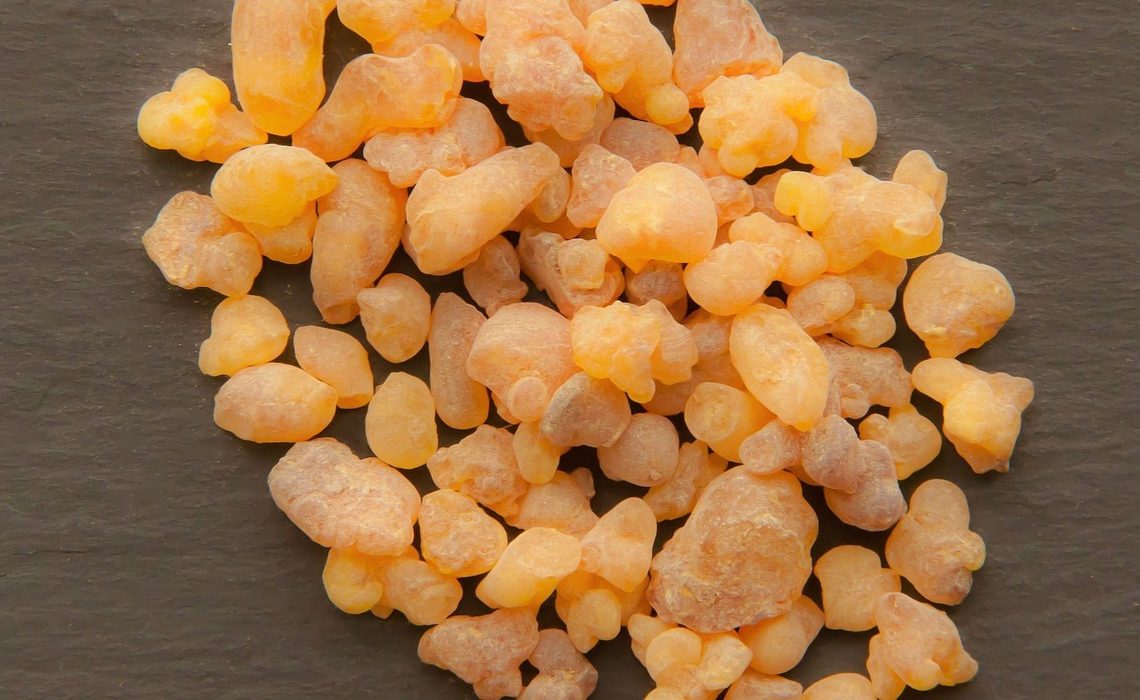
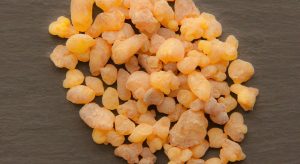
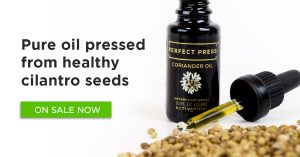
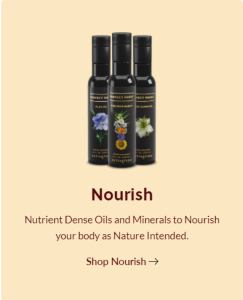
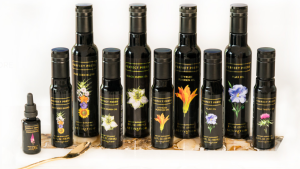
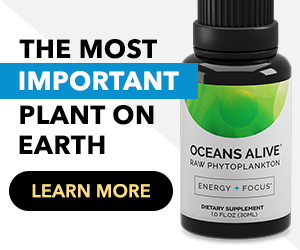

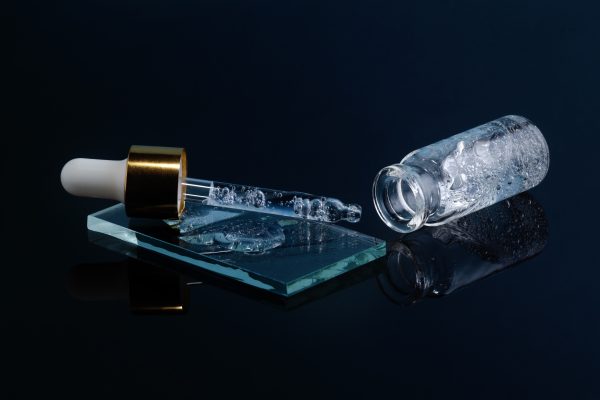

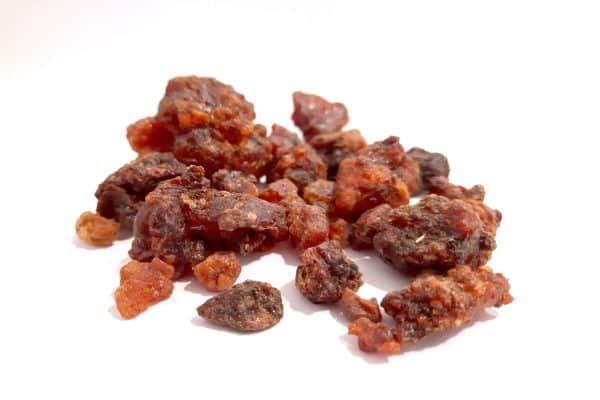
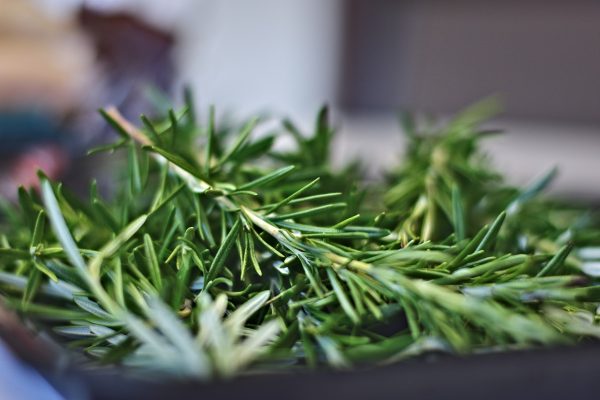


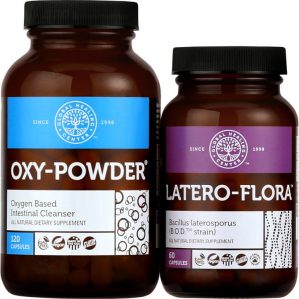
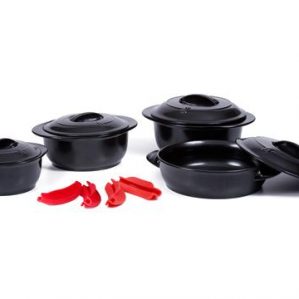

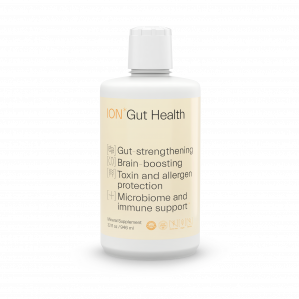
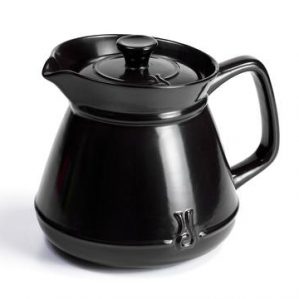











1 Comment
[…] is renowned for its potent anti-inflammatory effects. Compounds such as terpenoids and sesquiterpenes contribute to these properties. A study published […]